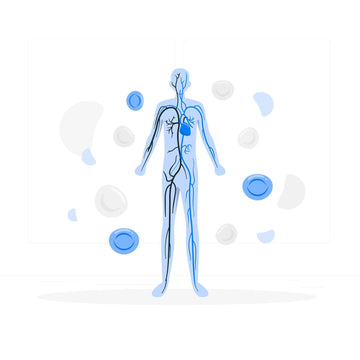Serum iron levels vary throughout the day. Morning levels are generally assumed to be higher than afternoon or evening levels. We studied whether our practice of restricting serum iron collections to the morning was necessary. Serum iron, iron-binding capacity, transferrin saturation, and ferritin levels were determined on blood specimens obtained from 20 healthy adult volunteers at 8 AM, noon, and 4 PM (day 1) and 8 AM (day 2). To further explore how quickly do ferritin levels change, these time points were carefully chosen to capture any potential fluctuations.
Ferritin levels for samples collected at noon on day 1, 4 PM on day 1, and 8 AM on day 2 ranged from 11%, 23%, and 22% lower to 14%, 13%, and 33% higher than 8 AM levels on day 1, respectively.
Day 1
8 am - baseline
12 pm - 11% lower than baseline or 14% higher than baseline
4 pm - 23% lower than baseline or 13% higher than baseline
Day 2
8 am - 22% lower than baseline or 33% higher than baseline
Serum ferritin levels in normal individuals have been reported to vary by 15% in men and 27% in women on a day-to-day basis, with variations of up to 62% when measured over a longer-term.
Meaning that ferritin will go through dramatic swings during the day.
Why is that important?
If you were to take a snapshot of ferritin in your bloodwork at any specific moment - the results may be misleading. Therefore, it is not only important to track it over time but also to be mindful of the time you are testing.
Although statistically significant differences among mean values for the collection times were observed for iron, iron-binding capacity, and (log) ferritin, no consistent diurnal variation was seen. Morning iron levels were higher than afternoon levels for only half of the subjects. Between-day variation for all 4 analytes was similar to within-day variation. We conclude that the practice of restricting iron specimen collections to a specific time of day does not improve the reliability of the test result.
Ferritin levels can fluctuate considerably in individuals due to factors such as diurnal variation and fasting status. Even when blood samples are consistently taken in the morning from fasting patients, iron levels may still appear low because it is an acute phase reactant, which can drop in response to acute inflammation. Can ferritin levels fluctuate? Yes, they are influenced by several factors, including inflammation.
- The ferritin test measures the level of ferritin, the major iron storage protein in the body.
- The ferritin test is a simple blood test that can be performed from home.
- High levels of ferritin can indicate an iron storage disorder, such as hemochromatosis, or a chronic disease process.
- Low levels of ferritin are indicative of iron deficiency, which causes anemia (a reduction in the number of oxygen-carrying red blood cells).
Normal ferritin levels range from:
24 to 336 micrograms per liter for men
11 to 307 micrograms per liter for women
Symptoms of Low Ferritin (Serum)
Your doctor may order a ferritin test if you have some of the following symptoms associated with low ferritin levels:
- Anemia
- Unexplained fatigue
- Hair loss
- IBD and/or celiac disease
- Fibromyalgia
- Depression
- Anxiety
- Hypothyroidism
- Attention issues/ADHD
- Parkinson’s and/or restless leg syndrome
- Dizziness
- Chronic headaches
- Unexplained weakness
- Ringing in the ears
- Irritability
- Leg pains
- Shortness of breath
Low Ferritin Levels (Ferritin Deficiency)
Low Range (At-Risk)
Blood ferritin anywhere below 12 to 30 ng/ml indicates depletion of iron stores and is a diagnostic criterion for iron deficiency.
Because it also behaves as an acute-phase protein, the levels of ferritin can go up several-fold in response to stress and infections or inflammatory states.
In these cases, ferritin stops being an accurate indicator of iron deficiency.
Some studies state that the traditional cutoff point of 12 and 30 ng/ml is too low to detect iron deficiency anemia in the general population, and especially for those with inflammatory or liver diseases. A level higher than approximately 40 ng/ml was suggested to exclude iron deficiency in most patients, and a level higher than 70 ng/ml was suggested to exclude iron deficiency in patients with inflammation or liver diseases.
Other than anemia, low ferritin may also indicate hypothyroidism, vitamin C deficiency, or celiac disease.
Vegetarians can have significantly lower blood ferritin levels, resulting from iron deficiency. One study found 19% of vegetarians have iron deficiency.
Low ferritin can signal anemia, hypothyroidism, vitamin C deficiency, celiac disease, and many other conditions.

Higher than normal results
Higher-than-normal levels of ferritin can be indicative of an iron storage disorder such as hemochromatosis.
If your ferritin is higher than the below figures you have elevated Ferritin levels:
- 24 to 336 micrograms per liter for men
- 11 to 307 micrograms per liter for women
Hereditary hemochromatosis is an inherited (genetic) disorder in which there is excessive accumulation of iron in the body (iron overload). In individuals with hereditary hemochromatosis, the daily absorption of iron from the intestines is greater than the amount needed to replace losses. Since the normal body cannot increase iron excretion, the absorbed iron accumulates in the body.
A man with hemochromatosis can accumulate 20 grams of total body iron by age 40 to 50 (the normal iron content for the body is 3 to 4 grams). The excess iron deposits in the joints, liver, testicles, and heart, which cause damage to these organs, and cause signs and symptoms of hemochromatosis.
Women with hemochromatosis accumulate iron at a slower rate than men because they lose more iron than men due to iron loss from menstruation. Therefore, they typically develop signs and symptoms of organ damage due to excess iron 10 years later than men.
People with hereditary hemochromatosis may have no symptoms or signs (and have normal longevity), or they can have severe symptoms and signs of iron overload that include:
- sexual dysfunction
- heart failure
- joint pains,
- liver cirrhosis
- diabetes mellitus
- weight loss
- fatigue, and
- darkening of the skin.
The symptoms arise because iron accumulates in the organs and leads to destruction and loss of normal function.
Other causes of a high ferritin level are chronic inflammatory medical conditions such as liver disease or rheumatoid arthritis, or some types of cancer.
A higher than normal ferritin level can be seen in several conditions. However, diagnosis of these conditions might require additional testing based on your symptoms and physical examination.
- Hemochromatosis
- Porphyria — A group of disorders caused by an enzyme deficiency that affects your nervous system and skin
- Rheumatoid arthritis or another chronic inflammatory disorder
- Liver disease
- Hyperthyroidism
- Leukemia
- Hodgkin's lymphoma
- Multiple blood transfusions
- Alcohol abuse
- Taking too many iron supplements
If your ferritin level is above normal, your doctor might need to evaluate the results with those of other tests to determine the next steps.
For specifics about what your ferritin test results mean, talk to your doctor.
Read more from the Mayo Clinic.

Summary
A serum ferritin concentration less than 30μg/L in an adult or 20μg/L in a child indicates iron deficiency. The cause of the iron deficiency should be identified and is particularly important in men and post-menopausal women, where this might be the first sign of bowel cancer.
It is important to recognize the limitations of this otherwise valuable test.
Ferritin concentrations may be increased by inflammation, liver and kidney disease, malignancy, obesity, and age. These increases may obscure the decrease that one might expect in iron deficiency. Measurement of soluble transferrin receptors in serum may aid the diagnosis of
iron deficiency in these settings.
In early iron overload, the only sign of hereditary hemochromatosis may be a transferrin saturation greater than 45%. Even though serum ferritin is a valuable marker of iron overload and a useful guide for therapy, it is often normal in early disease.
You can easily measure and track your ferritin graphically using Lab Me’s at-home health tests. Either the single marker Ferritin or look at the Overload health test (best for athletes).


